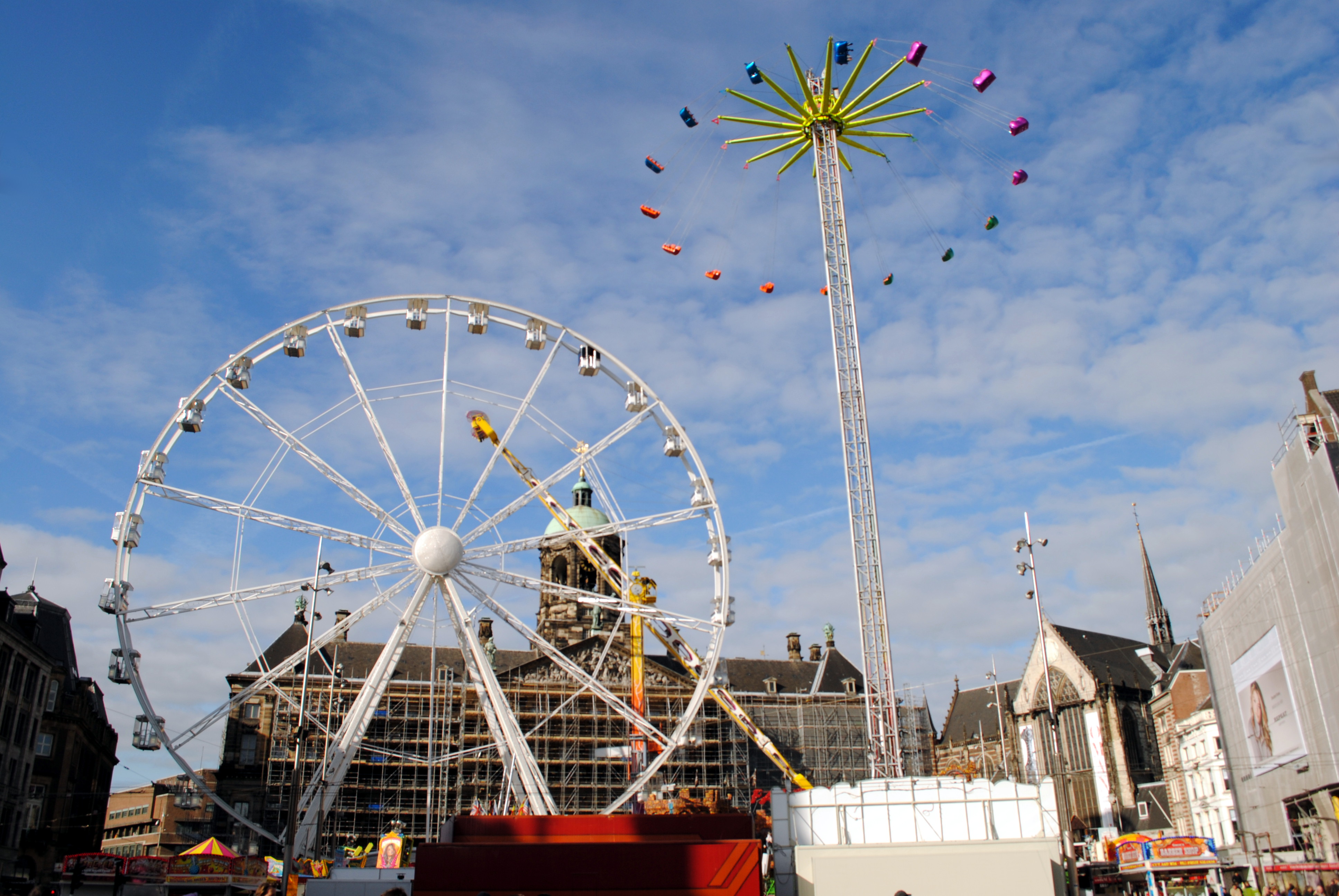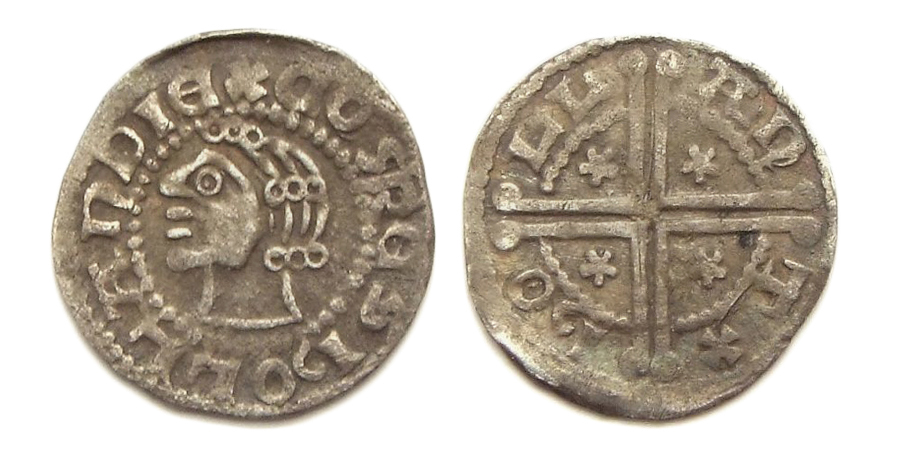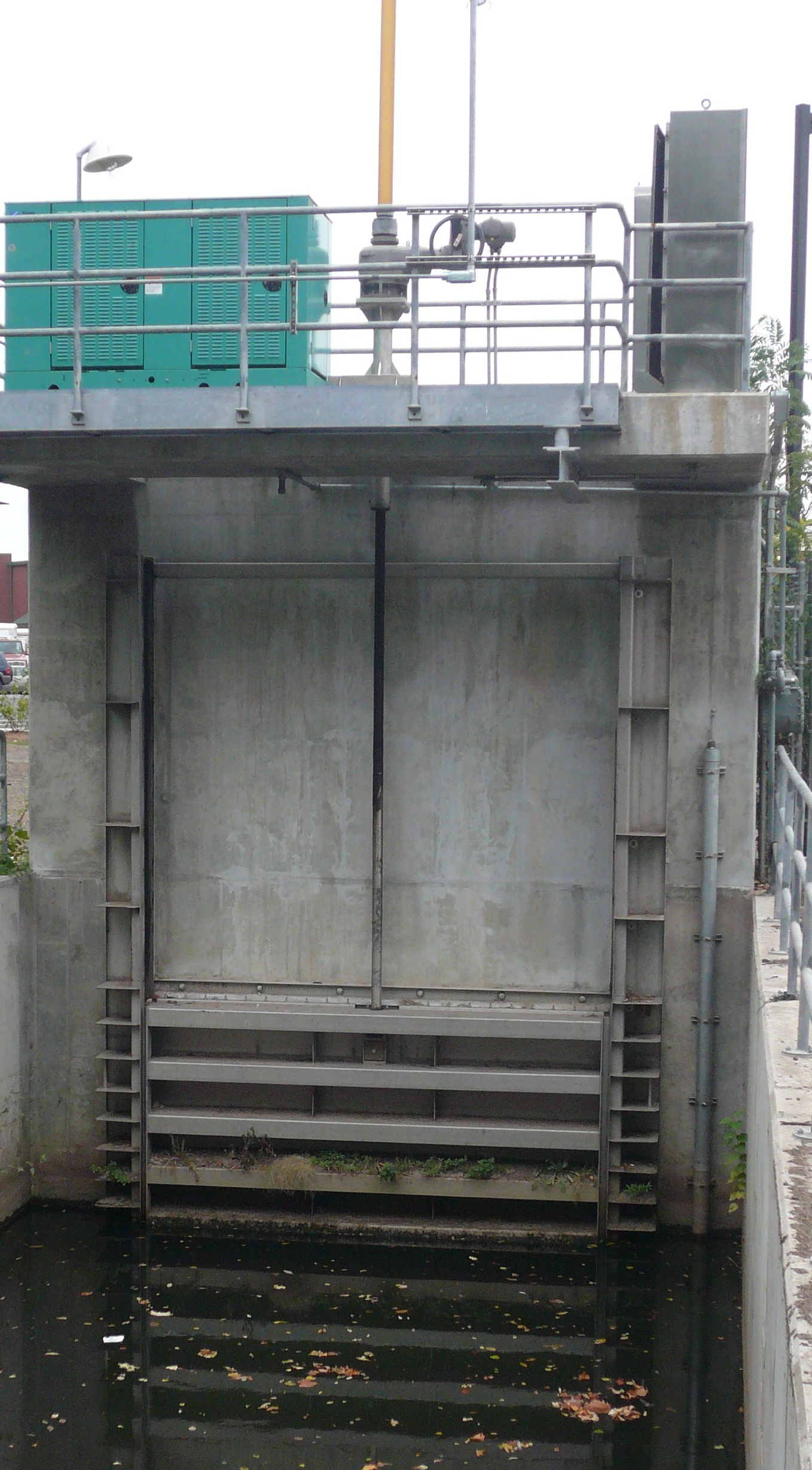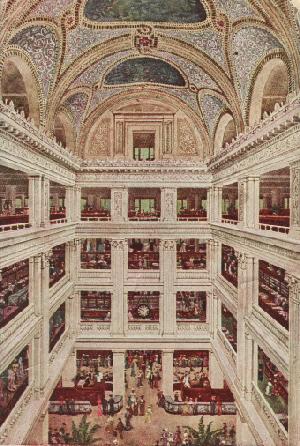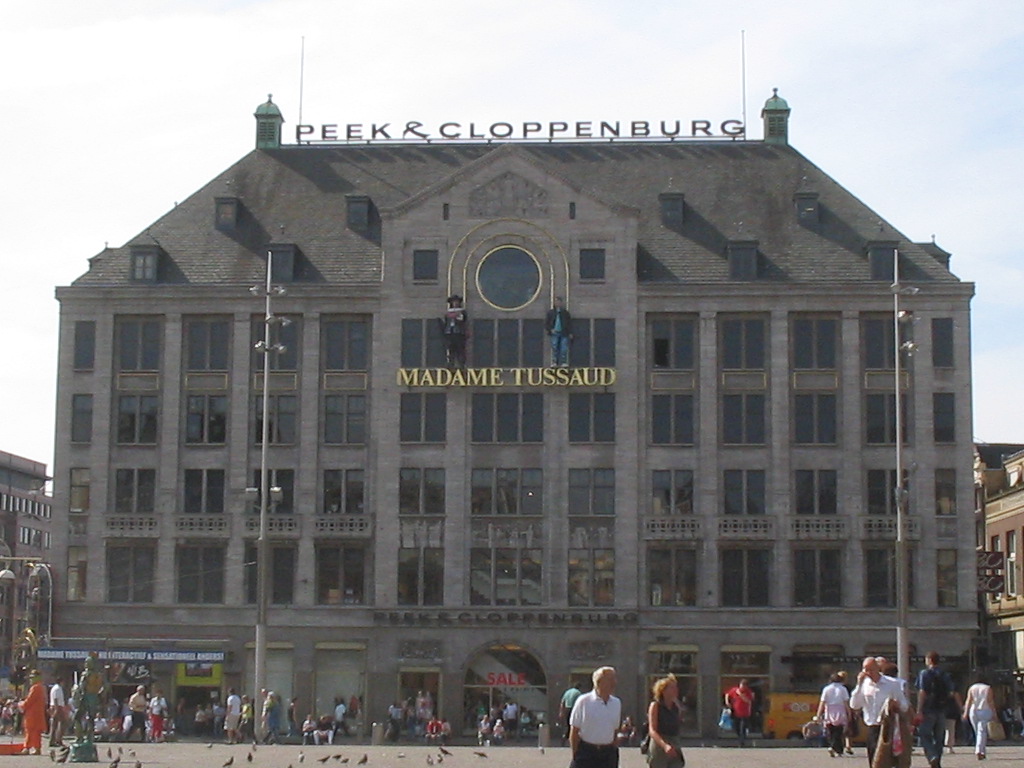|
Dam Square
Dam Square or the Dam () is a town square in Amsterdam, the capital and most populated city of the Netherlands. Its notable buildings and frequent events make it one of the best-known and most important locations in the city and the country. Location and description Dam Square lies in the historical center of Amsterdam, approximately south of the main transportation hub, Amsterdam Centraal, Centraal Station, at the original location of the dam in the river Amstel. It is roughly rectangular in shape, stretching about from west to east and about from north to south. It links the streets Damrak and Rokin, which run along the original course of the Amstel River from Centraal Station to Muntplein (Amsterdam), Muntplein (Mint Square) and the Munttoren (Mint Tower). The Dam also marks the endpoint of the other well-traveled streets Nieuwendijk, Amsterdam, Nieuwendijk, Kalverstraat and Damstraat. A short distance beyond the northeast corner lies the main red-light district: De Wa ... [...More Info...] [...Related Items...] OR: [Wikipedia] [Google] [Baidu] |
Royal Palace (Amsterdam)
The Royal Palace of Amsterdam in Amsterdam (Dutch: ''Koninklijk Paleis van Amsterdam'' or ) is one of three palaces in the Netherlands which are at the disposal of the monarch by Act of Parliament. It is situated on the west side of Dam Square in the centre of Amsterdam, opposite the War Memorial and next to the Nieuwe Kerk. During the Batavian Republic the public floors of the building became the first Amsterdam museum under Louis Bonaparte and later became his royal palace when Napoleon crowned him king. After the fall of Napoleon, it became the palace of the Dutch Royal House. The public floors still function as a museum and are open to the public most days of the year. The palace building was commissioned by Mayor Nicolaes Tulp as a large-scale construction project for a new city hall, even before the old one burned down in 1652. It was completed in 1656 and became an international attraction for foreign visitors and the works of art installed in various public rooms were r ... [...More Info...] [...Related Items...] OR: [Wikipedia] [Google] [Baidu] |
Nieuwendijk, Amsterdam
The Nieuwendijk is a major shopping street in central Amsterdam. There are some 200 shops along the street. The street, which dates to the early medieval history of Amsterdam, counts 98 buildings with status. The Nieuwendijk runs northeast from Dam Square, then turns left near Prins Hendrikkade. It then heads northwest, crossing the broad street Nieuwezijds Voorburgwal at Martelaarsgracht, until it hits the Singel canal, where it continues westwards as the . The Nieuwendijk is part of a medieval street pattern intersected by a multitude of narrow alleys. Nine alleys run between Nieuwendijk and Damrak, seven run between Nieuwendijk and Nieuwezijds Voorburgwal, and three further alleys run west and east from Nieuwendijk beyond Martelaarsgracht. The ("short Nieuwendijk"), the westernmost part between Martelaarsgracht and Singel, was pedestrianised in the 1970s. In 2013, the entire street was pedestrianised. History Middle Ages The Nieuwendijk is one of the oldest streets of ... [...More Info...] [...Related Items...] OR: [Wikipedia] [Google] [Baidu] |
Floris V, Count Of Holland
Floris V (24 June 1254 – 27 June 1296) reigned as Count of Holland and Zeeland from 1256 until 1296. His life was documented in detail in the Rijmkroniek by Melis Stoke, his chronicler. He is credited with a mostly peaceful reign, modernizing administration, policies beneficial to trade, generally acting in the interests of his peasants at the expense of nobility, and reclaiming land from the sea. His dramatic murder, said by some to have been arranged by King Edward I of England and Guy, Count of Flanders, made him a hero in Holland. Early life Floris was the son of Count William II (1227–1256) and Elisabeth of Brunswick-Lüneburg. His father was slain in 1256 by Frisians when Floris was just two years old. Custody over Floris fell first to his uncle (Floris de Voogd from 1256 to 1258), then to his aunt ( Adelaide of Holland from 1258 to 1263). The fight over custody of Holland culminated in the battle of Reimerswaal on 22 January 1263, where Count Otto II of Guel ... [...More Info...] [...Related Items...] OR: [Wikipedia] [Google] [Baidu] |
Road Toll (historical)
The road toll was a historical fee charged to travellers and merchants in return for permission to use the roads and waterways of the country or state concerned. It was reinforced in the Holy Roman Empire by the law of ''Straßenzwang'' which meant that traders in certain goods had to use specified roads. In return, they were usually guaranteed safe passage under the right of escort or ''Geleitrecht''. The road toll was widespread especially in medieval times, and, in addition to the payments from the staple rights, was an important source of income. History Road tolls usually had to be paid at strategic locations such as bridges (sometimes called a bridge toll) or gates. In Europe, the road toll goes back to the practice of the Germanic tribes, who charged fees to travellers if they wanted to cross over mountain passages. From that time, road tolls became commonplace in medieval times, especially in the Holy Roman Empire. The Empire had a "passage system" whereby a number of to ... [...More Info...] [...Related Items...] OR: [Wikipedia] [Google] [Baidu] |
Lock (water Navigation)
A lock is a device used for raising and lowering boats, ships and other watercraft between stretches of water of different levels on river and canal waterways. The distinguishing feature of a lock is a chamber in a permanently fixed position in which the water level can be varied. (In a caisson lock, a boat lift, or on a canal inclined plane, it is the chamber itself (usually then called a caisson (engineering), caisson) that rises and falls.) Locks are used to make a river more easily navigable, or to allow a canal to cross land that is not level. Over time, more and larger locks have been used in canals to allow a more direct route to be taken. History Ancient Egypt In Ancient Egypt, the river-locks was probably part of the Canal of the Pharaohs: Ptolemy II is credited by some for being the first to solve the problem of keeping the Nile free of salt water when his engineers invented the lock around 274/273 BC. Ancient China During 960–1279 CE, the natural extension o ... [...More Info...] [...Related Items...] OR: [Wikipedia] [Google] [Baidu] |
Sluice
A sluice ( ) is a water channel containing a sluice gate, a type of lock to manage the water flow and water level. There are various types of sluice gates, including flap sluice gates and fan gates. Different depths are calculated when design sluice gates. Sluices are used for channeling water toward a water mill, including for transporting logs from steep hillsides. Different terms are used regionally for sluices; the terms ''sluice'', ''sluice gate'', ''knife gate'', and ''slide gate'' are used interchangeably in the water and wastewater control industry. Etymology The term "sluice" originates from the Middle English word scluse, which derived from the Old French escluse (modern French: écluse). This, in turn, came from the Late Latin exclusa, a shortening of aqua exclusa, meaning "excluded water" or "a shut-off water channel." The Latin exclusa is the feminine past participle of excludere ("to shut out, exclude"), from *ex-* ("out") and claudere ("to close"). Regional ... [...More Info...] [...Related Items...] OR: [Wikipedia] [Google] [Baidu] |
Cornelis Anthonisz
Cornelis Anthonisz., Anthonisz. (Anthony's son) also spelled Anthonissen or Teunissen (ca. 1505 – 1553), was a Dutch painter, engraver, and mapmaker. Biography Anthonisz. was born in Amsterdam around 1505. He was a grandchild of Jacob Cornelisz van Oostsanen, who probably taught him to paint, and a cousin of Dirck Jacobsz. In 1538 he painted the first complete map of Amsterdam as a commission from the city fathers to present as a gift to Charles V. He is known mostly for his woodcuts, especially the ''Bird's eye view of Amsterdam'', from 1544. This was printed in 12 blocks of wood, and was recopied and reprinted as an accurate map until well into the 17th century. Unfortunately, this became severely damaged in a fire in the Amsterdam city hall in 1652, but it was restored in 1932. Many of the buildings in this painting still stand today. He also made several portraits of heads of state, and allegorical prints. Only two of his paintings survive that have been attributed ... [...More Info...] [...Related Items...] OR: [Wikipedia] [Google] [Baidu] |
De Bijenkorf
(; literally, "the beehive") is a chain of high-end department stores in the Netherlands, with its flagship store on Dam Square in Amsterdam. The chain is owned by Selfridges Group, owner also of Britain's Selfridges and Ireland's Brown Thomas and Arnotts. It was a member of the International Association of Department Stores from 1929 to 2012, with various CEOs acting as president of the Association. History De Bijenkorf was founded in 1870 by Simon Philip Goudsmit (1845-1889), starting as a small haberdashery shop at 132 Nieuwendijk, one of Amsterdam's oldest streets and to this day a main shopping street. Initially limited to yarn and ribbons, and employing a staff of four, the stock expanded gradually. After the death of Goudsmit in 1889, Goudsmit's widow expanded the business with the help of a cousin, Arthur Isaac, and her son Alfred, eventually buying adjacent buildings. In 1909, these connecting shops were replaced by a new building. That same year, a tem ... [...More Info...] [...Related Items...] OR: [Wikipedia] [Google] [Baidu] |
Department Store
A department store is a retail establishment offering a wide range of consumer goods in different areas of the store under one roof, each area ("department") specializing in a product category. In modern major cities, the department store made a dramatic appearance in the middle of the 19th century, and permanently reshaped shopping habits, and the definition of service and luxury. Similar developments were under way in London (with Whiteleys), in Paris () and in New York City ( Stewart's). Today, departments often include the following: clothing, cosmetics, do it yourself, furniture, gardening, hardware, home appliances, houseware, paint, sporting goods, toiletries, and toys. Additionally, other lines of products such as food, books, jewellery, electronics, stationery, photographic equipment, baby products, and products for pets are sometimes included. Customers generally check out near the front of the store in discount department stores, while high-end traditional d ... [...More Info...] [...Related Items...] OR: [Wikipedia] [Google] [Baidu] |
World War II
World War II or the Second World War (1 September 1939 – 2 September 1945) was a World war, global conflict between two coalitions: the Allies of World War II, Allies and the Axis powers. World War II by country, Nearly all of the world's countries participated, with many nations mobilising all resources in pursuit of total war. Tanks in World War II, Tanks and Air warfare of World War II, aircraft played major roles, enabling the strategic bombing of cities and delivery of the Atomic bombings of Hiroshima and Nagasaki, first and only nuclear weapons ever used in war. World War II is the List of wars by death toll, deadliest conflict in history, causing World War II casualties, the death of 70 to 85 million people, more than half of whom were civilians. Millions died in genocides, including the Holocaust, and by massacres, starvation, and disease. After the Allied victory, Allied-occupied Germany, Germany, Allied-occupied Austria, Austria, Occupation of Japan, Japan, a ... [...More Info...] [...Related Items...] OR: [Wikipedia] [Google] [Baidu] |
Madame Tussauds Amsterdam
Madame Tussauds Amsterdam is a wax museum situated in Amsterdam, the capital city of the Netherlands. It is located in the centre of the city on Dam Square, near the Royal Palace of Amsterdam. Founded in 1970, it was the first Madame Tussauds that was opened in mainland Europe as well as being the first foreign branch of the British institution. The collection of Madame Tussauds Amsterdam consists of a collection of wax figures of famous celebrities in different categories such as the Golden Age of Dutch history,Madame Tussauds vernieuwt en zet Rembrandt op straat ''de Volkskrant'', 6 December 2011 music, sport and film. History ;Building The building that houses Madame Tussauds Amsterdam was designed by the Du ...[...More Info...] [...Related Items...] OR: [Wikipedia] [Google] [Baidu] |
